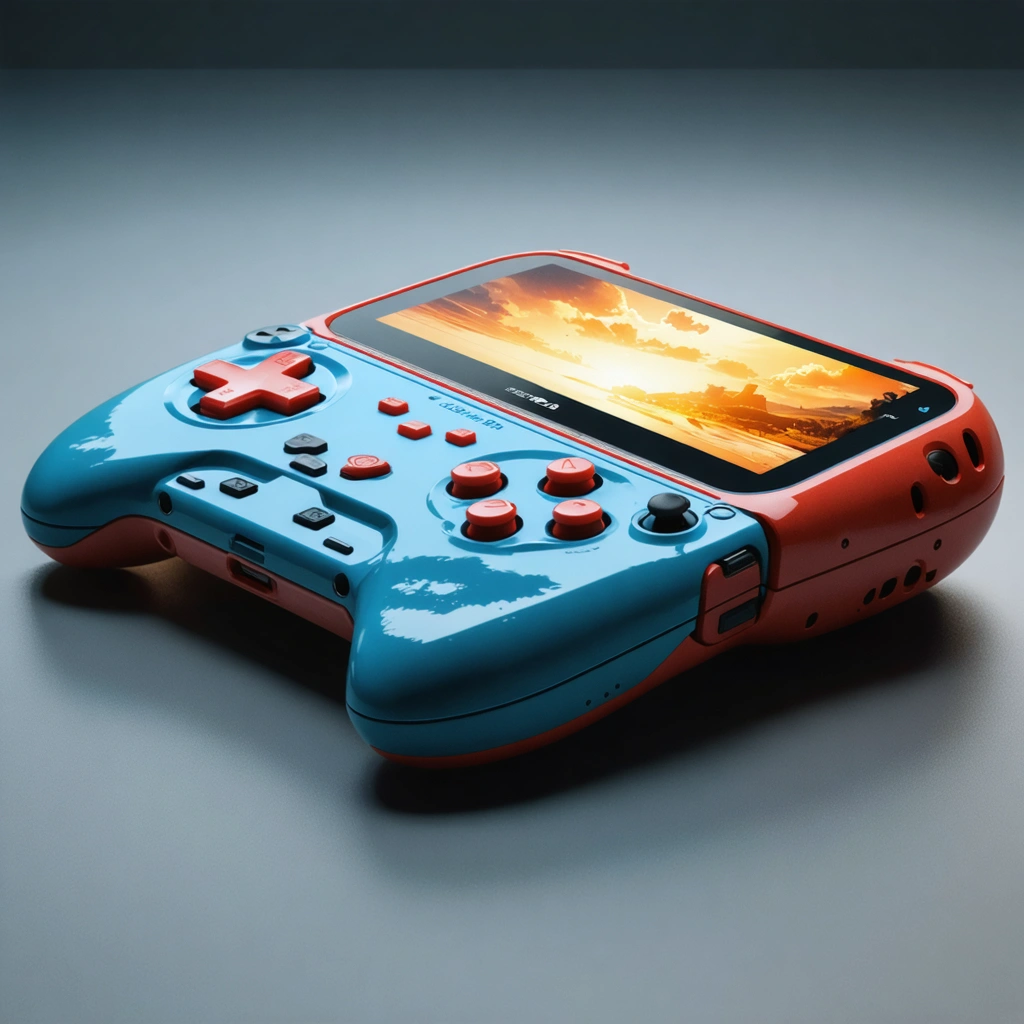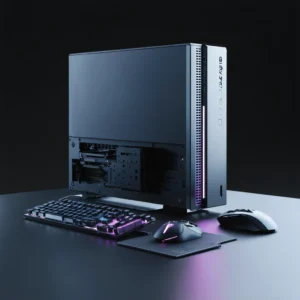
Introduction: A New Era in Portable Gaming
In recent years, the landscape of handheld gaming PCs has undergone tremendous change, with innovation pushing the boundaries of what is possible. The industry is now witnessing a bold shift where manufacturers dare to explore unconventional designs and features, proving that sometimes the most effective way to capture a market is to take risks. As technology evolves and consumer expectations rise, the concept of “weird” in this domain is transforming from a mere curiosity to a strategic advantage. Why weird? I say, why not? This article delves deep into the emerging trends, technological breakthroughs, and market dynamics that are shaping the future of handheld gaming PCs.
Innovative Trends in Design and Hardware
Unconventional Aesthetics and Ergonomics
The traditional view of handheld gaming devices is being challenged by designs that break free from conservative norms. Manufacturers are experimenting with unique aesthetics and ergonomic shapes that not only stand out in a crowded market but also provide enhanced user experiences. These devices are incorporating features such as:
- Curvilinear designs that adapt perfectly to the human hand
- Modular components for customized user interfaces
- Integration of futuristic materials like graphene and carbon fiber
- Enhanced cooling systems that defy typical thermal constraints
The push towards radiant and innovative design is not simply about looks—it also signals a dedication to functionality. In this new wave, weird is synonymous with unexpected improvements in performance and user engagement.
Technological Breakthroughs Driving the Change
Technological innovation plays a pivotal role in the evolution of handheld gaming PCs. The adoption of cutting-edge processors, advanced GPU architectures, and high-speed connectivity solutions highlights a commitment to delivering top-tier gaming experiences. New systems are engineered with the following advancements:
- High-Performance Mobile CPUs: Designed to handle resource-intensive games and multitasking without compromising energy efficiency.
- Next-Generation Graphics: With integrated ray tracing and AI-enhanced image processing, these units are capable of producing console-quality visuals in a portable format.
- Adaptive Cooling Technologies: Systems that offer dynamic thermal management, ensuring sustained peak performance during long gaming sessions.
- Customizable Controls: With programmable buttons and haptic feedback, user interaction is becoming more responsive and immersive.
Such technological improvements are turning the handheld gaming PC into a device that not only competes with traditional consoles but sometimes even surpasses them by offering a personalized, on-the-go gaming experience.
Market Dynamics and the Business Perspective
Emerging Market Trends and Consumer Demands
The market for handheld gaming PCs is fast evolving. Enthusiasts and tech-savvy consumers are driving demand for devices that combine high performance with portability. The following points summarize the current market dynamics:
- Diversification: Consumers are no longer satisfied with cookie-cutter designs; they crave devices that reflect individual style and unique user experiences.
- Accessibility: Lower barrier-to-entry in terms of price and performance is motivating a new wave of gamers who previously shied away from expensive desktop rigs or consoles.
- Community and Customization: Online communities and dedicated modders contribute to a culture of continuous improvement, fostering regular upgrades and personalized modifications.
Industry analysts assert that the embrace of “weird” devices could signal a broader paradigm shift whereby differentiation through design and innovation becomes key to market survival. Companies that are willing to deviate from established norms are finding new ways to attract a diverse audience.
Business Strategies for Success in a Disruptive Market
From a business standpoint, embracing unconventional or “weird” design choices is also a calculated risk that may yield significant rewards. Companies are realigning their strategies to focus on:
| Strategy | Description | Potential Impact |
|---|---|---|
| Unique Branding | Building a strong, distinctive brand identity that helps the product stand apart from competitors. | Enhanced customer loyalty and market share |
| Customization Options | Offering modular solutions that let customers tailor their devices to individual tastes and requirements. | Higher engagement and repeat sales |
| Innovative Marketing | Leveraging social media platforms and influencer partnerships to promote the “weird” factor as a unique selling point. | Increased market penetration and brand awareness |
Leaders in the gaming industry are now rapidly exploring ways to integrate atypical designs with high-end performance. The willingness to experiment with “weird” features not only enhances product differentiation but also anticipates emerging consumer demands. In many cases, breaking the mold has led to innovations that later become industry standards.
Future Perspectives and Challenges Ahead
Adapting to Rapid Technological Changes
While the shift toward unconventional handheld gaming PCs is gaining momentum, companies must also consider the rapidly changing technological landscape. The following factors pose both opportunities and challenges:
- Integration with Cloud Gaming: As cloud gaming continues to mature, handheld devices need to optimize local performance while leveraging remote computing capabilities.
- Battery Life Versus Performance: Achieving a perfect blend of powerful processors and long-lasting battery technology remains a significant hurdle.
- Software Ecosystems: Building robust, versatile software platforms that support a wide range of games and applications is critical for success.
Researchers and developers are now working hand in hand to address these issues. With innovations in battery technology, processor efficiency, and software design, the future promises handheld systems that are not only powerful but also flexible and reliable.
Outlook: The Business Case for Embracing Weird
The unconventional design could very well be the cornerstone of a new business model in the gaming industry. Companies that embrace the odd, unusual, and sometimes downright “weird” elements of design stand to revolutionize the market. Consider the following benefits:
- Market Differentiation: In a saturated market, unique design elements can capture consumer interest and set a product apart from its competitors.
- Increased Agglomeration: When a product is distinctive, it immediately gains traction among niche communities who appreciate and celebrate its differences.
- Innovative Edge: Distinct designs drive the conversation and media attention that can lead to higher visibility and increased sales volumes.
Business strategists suggest that the willingness to innovate—and even to appear “weird”—is not a liability but a signaling mechanism of a brand’s readiness to lead in a new era of gaming technology. By fostering a culture that rejects mediocrity, companies confirm their commitment to pushing the boundaries of what gaming can be.
Conclusion: A Bold Future for Portable Gaming
Ready to Disrupt the Status Quo
The adoption of unconventional designs and innovative technologies signals a transformative phase in the evolution of handheld gaming PCs. Industry leaders and emerging brands alike are beginning to realize that the path to success is often paved with bold, sometimes eccentric decisions. The very nature of what defines a successful gaming device is being reimagined—to the benefit of gamers and manufacturers alike.
Final Thoughts
As we stand on the precipice of this new age, the mantra “Why weird? I say, why not?” resonates powerfully. The oddities that once might have been dismissed as novelties are now being recognized as the seeds of a revolution. This wave of innovation promises to deliver devices that are as much a statement of individual style as they are a powerhouse of performance. For those willing to push the envelope and for consumers hungry for novelty and excellence, the future of handheld gaming PCs is not only bright—it’s wonderfully weird.
In summary, the fusion of creative design, disruptive technology, and strategic business insight is rewriting the rules of portable gaming. Companies that embrace these changes are setting the stage for an era defined by innovation rather than conformity. With each bold step, the industry moves closer to a future where every handheld device is a testament to creativity and the relentless pursuit of excellence in gaming technology.







